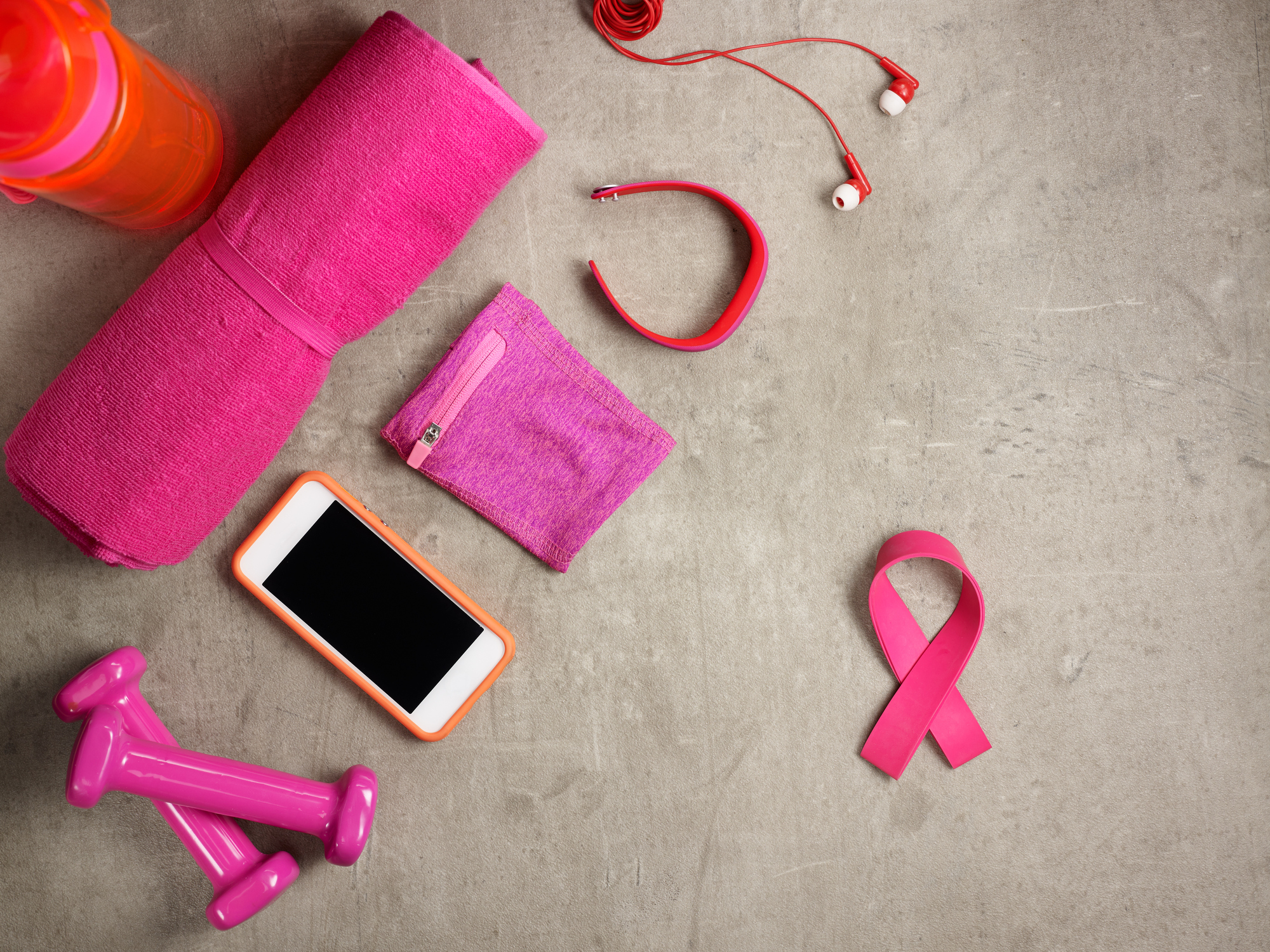Get Easy Health Digest™ in your inbox and don’t miss a thing when you subscribe today. Plus, get the free bonus report, Mother Nature’s Tips, Tricks and Remedies for Cholesterol, Blood Pressure & Blood Sugar as my way of saying welcome to the community!
5 ways exercise helps battle breast cancer

Although it may seem like exercising would be a difficult task for anyone undergoing treatment for breast cancer, according to doctors at Johns Hopkins, it’s one of the best things to do.
That’s because studies show that breast cancer patients who exercise have less of those nasty side effects after treatments and improved quality of life, including a better mood, less fatigue, and overall health and wellbeing.
And according to a new study, exercise could also help kill cancer cells, slow tumor growth, and improve patient outcome, especially when being treated with immunotherapy drugs.
Stimulating your natural immunity
The research, by a team of scientists at Massachusetts General Hospital and Harvard Medical School, used tumors in mouse models of human breast cancer to prove that regular aerobic exercise resulted in slower tumor growth and increased anti-tumor response, compared to sedentary mice.
Here’s how exercise battles breast cancer:
#1 – It increases and activates cytotoxic T Lymphocytes
The team found that the beneficial effects of exercise in combatting breast cancer were dependent on cytotoxic T lymphocytes, specifically CD8+ T cells. In fact, when the researchers depleted these cells in mice, tumor growth increased even in the face of exercise.
The research showed that exercise training brings these immune cells which are capable of killing cancer into the tumors and activates them.
“Humans whose tumors have higher levels of CD8+ T cells tend to have a better prognosis, respond better to treatment, and have reduced risk of cancer recurrence compared with patients whose tumors have lower levels of the immune cells, effects that were echoed by a reduced incidence of metastasis, or spread, of the cancers in mice that exercised,” said study author Rakesh K. Jain, Ph.D., director of the Steele Labs at MGH and Andrew Werk Cook Professor of Radiation Oncology at HMS.
#2 – It boosts chemokines
The researchers discovered that levels of two chemokines (known as CXCL9 and CXCL11), which are responsible for the recruitment of those CD8+ T cells that kill off cancer were increased in mice that exercised.
#3 – It enhances response to immune checkpoint blockade
CD8+ T cells are also essential for the success of drugs known as immune checkpoint inhibitors that have revolutionized therapy for many types of cancer. Sadly, these drugs have experienced only limited success in breast cancer.
But, that could all change with exercise…
The study showed that exercise increased the response to immune checkpoint blockade, which can allow increased action of these drugs, compared to sedentary mice.
The overall results were:
- a rewiring of tumor immunity
- increased recruitment and activation of cancer-killing immune cells
- a “profound reprogramming of the tumor microenvironment
- slower tumor growth
- and better outcomes!
That’s a lot of benefits from simply doing something that’s good for you anyway!
How much is enough?
So you’re probably wondering how much exercise you should get and what kind…
And luckily, the researchers answered that too.
They used daily sessions of a moderate-to-vigorous intensity, aerobic exercise that lasted 30-45 minutes per session.
For reference, moderate-intensity exercise involves working out at 50 to 70 percent of your maximum heart rate or hard enough that you can talk, but not sing.
This would include activities like:
- Brisk walking
- Using an elliptical machine
- Light jogging or swimming
- Gardening
- Heavy housework, such as vacuuming
On the other hand, vigorous-intensity exercise occurs at a heart rate of 70 to 85 percent of your maximum heart rate. And when you try to talk, you can only get out a few words at a time – not complete sentences.
Vigorous-intensity activities are:
- Jogging
- Running
- Lap swimming
- Dancing
- Martial arts
- Hiking uphill
So if you’ve been diagnosed with breast cancer, it seems that exercise could be your key to battling back the tumors, slowing the growth and coming out on top. Talk to your doctor about what level of activity is best for you.
Editor’s note: Discover how to live a cancer prevention lifestyle — using foods, vitamins, minerals and herbs — as well as little-known therapies allowed in other countries but denied to you by American mainstream medicine. Click here to discover Surviving Cancer! A Comprehensive Guide to Understanding the Causes, Treatments and Big Business Behind Medicine’s Most Frightening Diagnosis!
Sources:
Target Heart Rate and Estimated Maximum Heart Rate — CDC
American Heart Association Recommendations for Physical Activity in Adults — American Heart Association
Exercise and Breast Cancer — Johns Hopkins Medicine
Exercise benefit in breast cancer linked to improved immune responses — EurekAlert!












